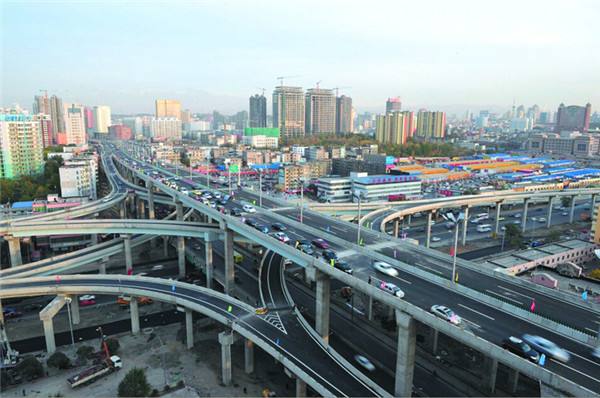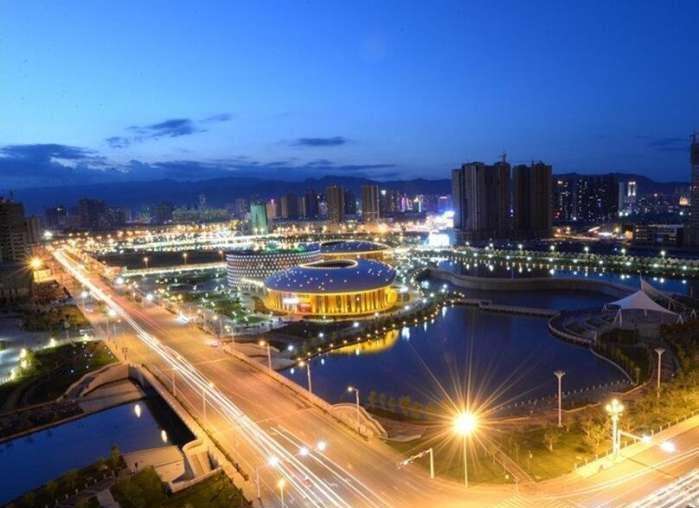Three-dimensional Traffic
4 min readTime flies. So many marvelous places like the vast grassland, great desert, lofty mountains, and scattered oases are now connected by roads, railways and flight routes; the ancient Silk Road has totally changed from the past desolation and is now shining with new vitality.
The road to happiness
At the founding of new China, there was only 3, 361 km of rough road with poor traffic capacity in Xinjiang, with 200 meters per 100 square kilometers.
There was a tradition that people in Xinjiang would carry their shoes on the back when they went out. They took off their shoes and carry them on the back when walking on the dirt road to keep the shoes from getting dirty, and put them on when they reached the market for dignity. So many people looked forward to walking without dirt covering the shoes, and this simple wish was finally realized after the founding of new China.

Lots of new built roads have broken the silence of the wilderness; they have been extended forward meter by meter, passing the hills, crossing the rivers and going over the even fields. Year in and year out, roads in Xinjiang are becoming much broader, flatter,darker and more beautiful. The “Frothing Road” and “Washboard Road” gradually disappear from the sight of people, replaced by more and more wide and flat high-grade highways.
Highway winds through the mountains
The promotion of roads quality both improves the traffic capacity and introduces a different kind of life to the civilians. Many fully equipped service areas appeared on freeways with parking lots, restaurants, rest services, public toilets and so on.
The pace of development of rural roads and rural passenger transport is also accelerating along with the continuous extension of the freeways. The rural road construction in Xinjiang has achieved a historic breakthrough since 2000; by the end of 2011, the bus pass rate of towns (corps had reached almost 100%, and more than 90% of the administrative villages (company. The status of “it is difficult to travel and transport” has been solved by the paving of flat asphalt roads to the doorstep of farmers and herdsmen, which also accelerate the pace of casting off poverty to become fairly well-off, and the construction of socialism new countryside has been advanced step by step orderly.

For thousands of years, for the herdsmen of the Majike who lived in the deep pastures of Tianshan, Tabulehete town, Usu city; where the horseshoes stepped, were where the road was. The distance between the town and the county is only 50 km however, a number of people dwelled in the mountains, and have never even been to the county for their whole life. In September 2004, when the road, from Usu city to the Jialake village, Bulehete town, was finished and the first bus reached, the villagers rushed about telling the news and shouted”Long live the Communist”, as joyful as when in the New Year or other festivals, for they saw the asphalt road for the first time.
In Xinjiang, such kind of places are too numerous to be mentioned. One miracle after another was left in the road construction history of Xinjiang.
Streetscape of Urumqi City
Tianzi road renovation project in Urumqi City
Xinjiang has the world’s longest brick paved road, which is in Ruoqiang County, with the total mileage of 102 km from mileage k931 to k1033 of national road G218, which was first paved in August 1966, with 61.2 million bricks, and now it is still intact as ever.
Xinjiang has the world’s longest desert road of 522 km, which is also the first longest classified road in drifting desert. Taklimakan Desert, the Sea of Death, witnessed this miracle in the world road construction history It was this miracle that brought developmen opportunities for the surrounding areas. In 2002, the desert road extended to the Qiemo County of Bayingolin Mongol Autonomous Prefecture, and the government mobilized farmers to adjust planting structure immediately with an annual increase of 12,000 mu of jujubes. decade later, jujube planting area has reached 143,000 mu, with the total output of 15,000 tons, and the output value of 290 million Yuan. One-third (4,000 Yuan) of the rural per capita net income comes from the selling of red jujubes. With the miraculous desert road, the fresh jujubes of Qiemo County can be transported to Korla, the capital of Bayingolin Mongol Autonomous Prefecture on the very day, and to Urumqi the next noon.
The roads in Xinjiang are still constantly extended forward, to prosperity, and to happiness, you can feel the strong pulse of a young Xinjiang from all these roads, the pulse is so steady and fortitudinous!








